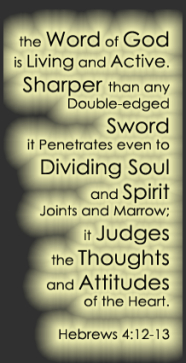Eph. 5:1 Follow God’s example, therefore, as dearly loved children 2 and walk in the way of love, just as Christ loved us and gave himself up for us as a fragrant offering and sacrifice to God.
Today and tomorrow, we’re going to reach back to the hymnbook and look at two individuals hymns which so well express period in the church calendar we’ve just experienced: The Good Friday / Easter story. Some of you may be unfamiliar with this song, and the YouTube videos for it are either instrumentals, or take a 1950’s ‘gospel’ approach to it. I was fortunate enough to grow up in the church founded by Oswald J. Smith, the writer, so I got to hear this the way his own church first heard it. My suggestion is that you find the print music and get someone to play it for you.
I hope this also benefits any of you who would desire to write lasting Christian material.
The process here is simple: Each verse is a snapshot of Jesus’ road to the cross. The first verse is general, but includes the picture of Jesus stooping. Is this a reference to Jesus washing His disciples feet? I think that was in mind.
The motif is a basic principle: As I get to know more about why, as I pray to be a better follower, as I experience Christ’s own prayer time in the garden, as I experience personal resurrection, and as I respond with worship and praise; as I do all these things listed in the third line of each verse, then what happens?
Then I find myself in the state mentioned in the last line of each stanza: I return to Jesus, I am shaped and molded, I am the beneficiary of grace, I am supported and sustained, I am ecstatically lost in thanksgiving and adoration.
So the song moves from the washing of the disciples feet, to the breaking of bread (‘take,’ ‘break’), to Gethsemane, to the betrayal and arrest, to “the world below,” (a reference to the worst this world can offer, or the Hades of the Apostles Creed, I’m not sure), to rising from the dead, to the complete recognition of how all this lifts us from our sin with reverberations into eternity.
1. Into the heart of Jesus Deeper and deeper I go, Seeking to know the reason Why He should love me so, Why He should stoop to lift me Up from the miry clay, Saving my soul, making me whole, Though I had wandered away. 2. Into the will of Jesus, Deeper and deeper I go, Praying for grace to follow, Seeking His way to know; Bowing in full surrender Low at His blessed feet, Bidding Him take, break me and make, Till I am molded, complete. 3. Into the cross of Jesus Deeper and deeper I go, Following through the garden, Facing the dreaded foe; Drinking the cup of sorrow, Sobbing with broken heart, "O Savior, help! Dear Savior, help! Grace for my weakness impart." 4. Into the joy of Jesus Deeper and deeper I go, Rising, with soul enraptured, Far from the world below. Joy in the place of sorrow, Peace in the midst of pain, Jesus will give, Jesus will give; He will uphold and sustain. 5. Into the love of Jesus Deeper and deeper I go, Praising the One Who brought me Out of my sin and woe; And through eternal ages Gratefully I shall sing, "O how He loved! O how He loved! Jesus, my Lord and my King!"
So is this just a classroom exercise in poetry analysis? There are some principles here.
- If we wish to write things that will endure, things with substance we must begin with scripture.
- If we wish to depict Christ — in words or in visuals — we need to take our cues from the narrative that already exists; in other words, the gospel writers give us a beautiful picture and nothing should be added or subtracted from it.
- We must remember that what Christ did, is part of what had already been planned, and has ramifications for what will take place, including our standing side-by-side with saints from decades and centuries prior.
- Songs (and poems) can teach. The Christian songwriter is part artist, part Bible expositor.
- Many of the older hymns seem to implore the hearer to make a response, but any song of proclamation (i.e. not a ‘vertical’ worship song) should cause us to want to respond. Here, if you are not struck by overcoming thanksgiving — “O how He loved!” — then your life stands in contrast to that of the hymn-writer. So you don’t need to beg hearers to respond, a person who truly sees the passion in the song will be broken by it.
John 20
30 Jesus performed many other signs in the presence of his disciples, which are not recorded in this book. 31 But these are written that you may believe that Jesus is the Messiah, the Son of God, and that by believing you may have life in his name.
Tomorrow: Part two of two.









Leave a comment